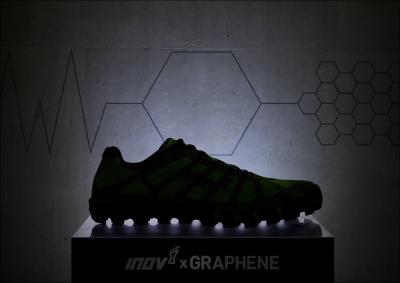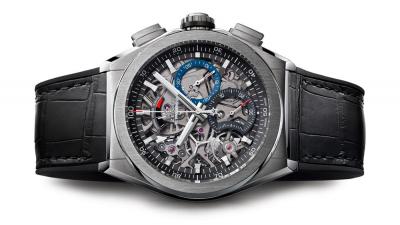The Graphene-Info newsletter, December 2017
Published: Tue, 01/02/18
A new graphene material called diamene switches from flexible to harder-than-diamond upon impact
Researchers from The City University of New York (CUNY) describe a process for creating diamene: flexible, layered sheets of graphene that temporarily become harder than diamond and impenetrable upon impact. The material is fascinating as it is as flexible and lightweight as foil but becomes stiff and hard enough to stop a bullet on impact. Such a material may be beneficial for applications like wear-resistant protective coatings and ultra-light bullet-proof films.
The team worked to theorize and test how two layers of graphene could be made to turn into a diamond-like material upon impact at room temperature. The team also found the moment of conversion resulted in a sudden reduction of electric current, suggesting diamene could have interesting electronic and spintronic properties. "Previously, when we tested graphite or a single atomic layer of graphene, we would apply pressure and feel a very soft film. But when the graphite film was exactly two-layers thick, all of a sudden we realized that the material under pressure was becoming extremely hard and as stiff, or stiffer, than bulk diamond" the team said.
Graphene-enhanced shoes poised to start a footwear revolution
The University of Manchester has teamed up with British sportswear brand Inov-8 to become the world's first company to incorporate graphene into running and fitness shoes. Laboratory tests have shown that the rubber outsoles of the newly developed shoes, planned to arrive on the market in 2018, are stronger, more stretchy and more resistant to wear.
“When added to the rubber used in inov-8’s G-Series shoes, graphene imparts all its properties, including its strength. Our unique formulation makes these outsoles 50% stronger, 50% more stretchy and 50% more resistant to wear than the corresponding industry standard rubber without graphene”, explained the nanomaterials expert at The University of Manchester that was involved in this project.
Graphene enables nano ‘tweezers’ that can grab individual biomolecules
Researchers from the University of Minnesota College of Science and Engineering have created graphene-based tiny electronic “tweezers” that can grab biomolecules floating in water with extraordinary efficiency. This, according to the team, could lead to a revolutionary handheld disease diagnostic system that could be run on a smartphone.
The graphene tweezers are said to be vastly more effective at trapping particles compared to other techniques used in the past due to graphene's extremely thin nature. The team also showed that the graphene tweezers could be used for a wide range of physical and biological applications by trapping semiconductor nanocrystals, nanodiamond particles, and even DNA molecules. Normally this type of trapping would require high voltages, restricting it to a laboratory environment, but graphene tweezers can trap small DNA molecules at around 1 Volt, meaning that this could work on portable devices such as mobile phones.
Another exciting aspect of this technology, that separates graphene tweezers from metal-based devices, is that graphene can also “feel” the trapped biomolecules. In other words, the tweezers can be used as biosensors with extreme sensitivity that can be displayed using simple electronic techniques.
A Graphene-Info special: 10 graphene-enhanced products already on the market
Graphene has been attracting attention due to its exciting properties which inspire countless ideas for applications; However, it is rightfully claimed that graphene has yet to transform an actual industry or become a household name.
With that said, graphene seems to be slowly but surely entering the market in all sorts of products. In this post, we list 10 products already commercially available that contain graphene - and these are not all of them. Hopefully this is just the beginning and many more applications will follow.
CealTech's marketing and sales manager explains the company's technology and business
Norway-based CealTech was established in 2012 to commercialize a patented 3D graphene production method. The company recently received its first prototype proprietary industrial-scale Plasma-Enhanced Chemical Vapor Deposition (PE-CVD) graphene production reactor.
A new watch by Zenith to feature a graphene-CNTs hairspring
The Swiss watch manufacturer, Zenith, will be launching a new version of their longtime flagship watch, the El Primero, which will sport a hairspring based on a matrix of carbon nanotubes and graphene. The new watch will retail in the neighborhood of $10,000.
The new Defy El Primero 21 will see many upgrades and changes, among which is the use of this new graphene-enhanced composite as Zenith’s proprietary design that is highly resistant to magnetism and temperature variations like many of the best silicium examples currently in use. Like silicium parts, Zenith’s carbon hairsprings are made with a photolithography process, but one that grows the parts on a silicium wafer, rather than etching them from one. A complex series of chemical and gaseous baths and reactions grow the composite at a molecular level and give it outstanding flex characteristics.
Pioneer launches graphene-enhanced sports earphones in the Chinese market
Pioneer Corporation, leader in optical disc technology and a worldwide manufacturer of audio, video and computer equipment, has launched the SEC-S801BT - a heart rate sports earphones with graphene diaphragm. These will be made available in China as a start.
The Pioneer SEC-S801BT is a Bluetooth dual-mode based sports earphones that track the user's heart rate while simultaneously playing music. The graphene diaphragm is considered a superior material for earphones as it allows more accurate sound reproduction and can deliver clarity in the mid to high frequency range. Using the graphene diaphragm, the Pioneer earphones reportedly provide a wider range of frequency response, resulting in an acoustically solid listening experience for the users that achieves a deep bass while still having best-in-class middle and high frequencies.
Graphene shows promise for aerospace applications
As part of a collaboration between the Graphene Flagship and the European Space Agency, experiments testing graphene for two different space-related applications have been performed. These have been reported to show very promising results, based on which the Flagship is to continue the development of graphene devices for use in space.
In addition, researchers at the University of Central Lancashire (UCLan) are exploring the practical applications of graphene in the space industry. In a recent experiment, they launched specially-designed graphene-enhanced carbon fiber material into near space using high altitude balloons. By comparing a graphene-enhanced carbon fiber to a standard carbon fiber casing, the researchers will be able to test how both react to extreme conditions in space. They will then compare the results to determine how graphene can be utilized for aerospace applications.
The best of 2017 - top stories on Graphene-Info
2017 will soon be over - and it was a good year for the graphene industry. More and more graphene-enhanced products are launched on the market in many industries - including sports equipment, sensors, audio, energy and more. Production capacity is increasing, prices are going down and it seems that graphene is finally starting to fulfill its promise.
Here are the top 10 stories posted on Graphene-Info in 2017, ranked by popularity (i.e. how many people read the story):
- An all-electric car with graphene-based battery to be unveiled at the 2017 Geneva Auto Show (Feb 15)
- Apple wants to use graphene membranes to enhance next-gen iPhone speakers or microphones (May 6)
- Stanford team demonstrates a graphene-based thermal-to-electricity conversion technology (Jan 25)
- Nanotech Engineering's graphene-enhanced solar panel gains MIT's approval (Oct 2)
- Graphene-Info's top 10 graphene applications of 2016 (Jan 2)
- MIT and Lamborghini to develop graphene-enhanced supercar (Nov 10)
- Ionic Industries announces a process for economically mass-producing graphene micro supercapacitors (Sep 11)
- Samsung's "graphene balls" improve the performance and charging time of Li-ion batteries (Nov 27)
- Indian team produces high surface area graphene from waste peanut shells (Nov 19)
- Researchers from China create graphene aerogel that converts sunlight into heat to produce water vapor at room temperature (May 21)
As was true in previous years, energy applications dominated the list in 2017. When large and popular companies such as Apple, and Samsung start discussing graphene, this sure makes an impact on the industry, even though in most cases these are just reports on early research or patents.
We hope that 2018 will be another good year for the graphene industry and that the commercialization trend will continue.
Researchers from China designed a new growth method that produces smooth and pristine graphene using a carefully engineered substrate.
The European Defence Agency (EDA) hosted the kick-off meeting for a new study on possible future applications of graphene in the military domain and its expected impact on the European defence industry.
Scientists at The University of Manchester have reported the development of a simple and cost-effective method to manufacture graphene-based wearable electronic textiles on an industrial scale.
Researchers from Leiden University in the Netherlands have shown that graphene floating atop water actually attracts it, meaning it is hydrophilic (given that the surface of the water is clean and smooth). This contradicts a common view that graphene is in fact hydrophobic.
Researchers from Zhejiang University in China have developed a safe, flexible, fast-charging aluminum-graphene battery.
Researchers from the Siberian Federal University (SFU), the Krasnoyarsk Research Center at the Siberian Division of the RAS, and the National University of Science and Technology MISIS have reported graphene-enhanced rechargeable lithium-ion batteries with double the capacity.
A research team from the Paul Scherrer Institute in Switzerland and Sapienza University in Rome developed a loudspeaker driven by a light signal - and without electricity- that uses modulated light that shines on a 3D graphene sponge.
Paragraf, a Cambridge-based graphene technology developer, announced a joint development project targeting new graphene-based solar technology with Verditek, a clean technology company.
Swinburne researchers have received 3.45 million AUD (around $2.64 USD) in funding to continue work on a project investigating energy storage alternatives using graphene oxide.
Skeleton Technologies announced the signing of a distribution agreement with Sumitomo Corporation Europe, with the aim of providing graphene-enhanced energy storage solutions for the rapidly growing hybrid electric and electric vehicle industry.
Do you have a friend or a colleague that might be interested in Graphene technology? Forward this mail to update him on the world of Graphene.
If you received this email from a friend, subscribe to this newsletter here!










